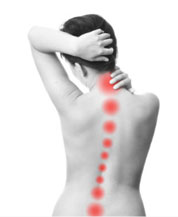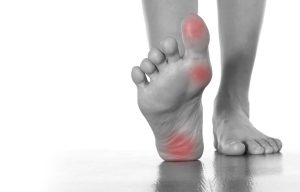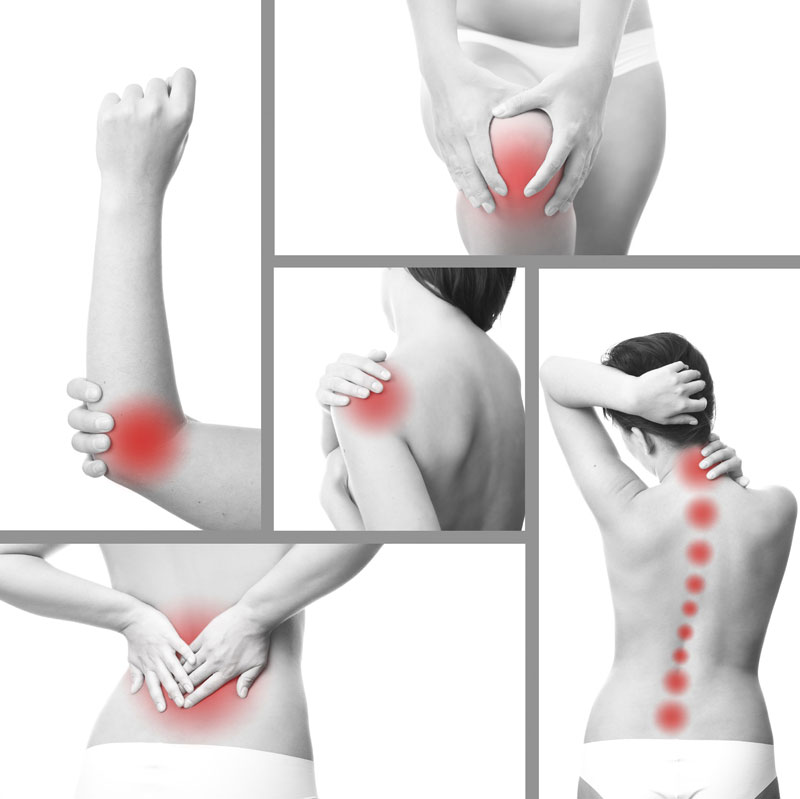Persistent Pain- Why is this happening to me?
 We can all recognise that pain can often be associated with some sort of tissue damage and inflammatory response. Such as when you sprain your ankle, there is firstly an inflammatory response which can contribute to pain sensitive chemicals and swelling. This inflammatory response is an essential part in normal tissue repair. Typically all tissues repair with time and our bodies natural healing processes. Some tissues are faster (such as skin) and other tissues are a bit slower (such as bones or tendons).
We can all recognise that pain can often be associated with some sort of tissue damage and inflammatory response. Such as when you sprain your ankle, there is firstly an inflammatory response which can contribute to pain sensitive chemicals and swelling. This inflammatory response is an essential part in normal tissue repair. Typically all tissues repair with time and our bodies natural healing processes. Some tissues are faster (such as skin) and other tissues are a bit slower (such as bones or tendons).
So why can pain sometimes persist despite enough time passed to allow tissue repair?
There are a few reasons for this and for each person different contributing factors can be present.
- Firstly the injured tissues (muscles, tendons, bones) may have repaired or healed, but are not yet operating in a healthy way. Such as when we have underused our muscles for a period of time resulting in weakness or muscle imbalance. As an example this can occur if we have to use crutches for a period of time resulting in some muscles being weak and others tight, even though our knee has healed.
- Secondly, sometimes we can change our posture to adapt to our injury (such as limping with an ankle sprain, or avoiding shoulder movement after a shoulder injury) which can sometimes result in persistent postural habits that can overload even healthy tissue.
- Thirdly, sometimes our nervous system (our brain, spinal cord and nerves) can become over sensitised. Let’s explore this in more detail.
How does the brain and nervous system affect pain?
There has been lots of research recently on persistent pain and the brain and how it can affect our experience of pain. Some of the results of this research are complex but nearly all of it highlights how important our brain is in our experience of pain. Here are some highlights from recent research:
1) Pain is an output from the brain, not an input from the tissues.
That’s right. It’s not our tissues (torn muscles, broken bones) that create the experience of pain, but simply a message that comes OUT of our brain. This message is sent out in response to perceived threat.
So in a nutshell, what happens in our bodies is that we have nerves that send messages to the brain (such as: “I touched a hot stovetop” or “I stepped on a sharp piece of glass” or “something just scratched my leg!”). The brain then collects that information and quickly puts it into its data processing centre to decide “Is this dangerous? Do I need to let you know about this?” It bases this decision on many things, including what we see, the environment we are in, our beliefs, our emotions and our past experiences.
Once the brain has decided that this sensation input could be dangerous, it quickly sends out a message of pain to alert you to change what you are doing. This message is very useful in protecting us from burning ourselves, cutting ourselves and damaging ourselves further. However, because the brain makes this decision to send pain out based on a lot of data in the processing centre, sometimes pain can be sent out as a message even though there is no real danger or damage. It is just that the brain, for some reason, has perceived the situation as dangerous.
For example a simple scratch on the leg could be perceived as more painful if you were walking through the jungle (Was that a deadly plant? Or a snake?), than if you were walking down the hall at home (the kids have left their toys on the floor again!). This is the result of the brain sending out pain signals of different volume depending on our current environment.
 Another example of our changing ‘pain output’ or perceptions could be this; If you imagine the World Cup Football final comes down to a penalty shootout. If the striker and the goal keeper both have exactly the same knee ligament sprain at that moment when a goal is finally scored, both of those players will experience very different symptoms of pain. One player has just won the World Cup for his team, so his knee sprain might not feel too bad! The other player has lost the World Cup for his team, and his knee sprain will probably feel a lot worse!
Another example of our changing ‘pain output’ or perceptions could be this; If you imagine the World Cup Football final comes down to a penalty shootout. If the striker and the goal keeper both have exactly the same knee ligament sprain at that moment when a goal is finally scored, both of those players will experience very different symptoms of pain. One player has just won the World Cup for his team, so his knee sprain might not feel too bad! The other player has lost the World Cup for his team, and his knee sprain will probably feel a lot worse!
This is the result of the brain sending out pain signals of different volume depending on our current emotional state.
Likewise our past experiences (previous injuries, past traumas and difficulties) and our beliefs can all have an impact on the brain deciding whether to send a pain message out or not.
So your experience of pain is an output from your brain. It decides to send out that signal based on what it perceives to be threatening. It makes this decision based on your past experiences, your beliefs, your environment and your emotional state. Sometimes this pain message gets sent out too readily which can result in the persistence of the painful experience beyond normal tissue repair.
2) Pain is not ever indicative of tissue damage
 This concept always seems strange. But it is true and we know it to be true. Ever stubbed your little toe? The agony! But is there tissue damage? Not usually. What about a paper cut? That can really hurt too! But is there much damage? Not really, it heals by itself without anything needing to be done.
This concept always seems strange. But it is true and we know it to be true. Ever stubbed your little toe? The agony! But is there tissue damage? Not usually. What about a paper cut? That can really hurt too! But is there much damage? Not really, it heals by itself without anything needing to be done.
How is it that these simple things can hurt so much, yet it is known that we can have cancerous growths (lots of tissue damage) without any pain?
This is because the volume of pain that is sent out from the brain is a very unreliable in determining tissue damage. Pain is always sent out from the brain in response to perceived threat (is this bad?) but the amount of pain that is sent out will vary a lot! The pain output message is a great on/off switch that lets you know you need to change something (such as dropping a hot saucepan or getting off that sharp piece of glass underfoot). It’s just not a very good volume switch!
There have been stories in the past of people who have had limbs taken by shark attacks, nail gun injuries through the head, major arteries severed in accidents (lots of damage!) and these people will not report a lot of pain. Yet something as small and insignificant as a kidney stone can leave someone writhing in pain, with very little long term damage.
So if you have been experiencing lots of pain, you can be assured that this does not actually indicate lots of “damage” as the two are never related
3) Our nervous system can become more sensitive if we are under stress
The brain relies on input messages from your tissue, and these messages are sent along our peripheral nerves to our brain. Messages could include “I touched something hot” or “something just scratched my arm”.
It has been found that thes e nerves that carry the messages to the brain can become more sensitive (that is, carry more information quickly with more receptor cells along the nerve) when we have periods of stress which can make us more alert to danger.
e nerves that carry the messages to the brain can become more sensitive (that is, carry more information quickly with more receptor cells along the nerve) when we have periods of stress which can make us more alert to danger.
Likewise, our brain can also ‘listen’ to messages from the incoming nerves more readily when we are under stress. Normally our brain can ignore some of our daily input messages. Which will explain why we sometimes have that ‘mystery bruise’ (how did that get there?) when our brain has just ignored something it has perceived as uneventful or irrelevant. But when we are stressed and have increased stress hormones in our body, our brain goes on ‘high alert’ and listens to more incoming messages.
So in periods of stress our incoming nerves can send more messages and our brain can suddenly start paying a lot more attention to these messages. This can contribute to a very sensitive nervous system that sends pain signals out more readily than it should.
From this it is important to understand how to manage stressful situations and your own responses, as stress can make our nervous system more sensitive than it needs to be.
This might mean you try some relaxation techniques, try to worry less about small things, have gratitude for the positive things in your life and try to focus on your own internal dialogue- is your own stress response benefiting you? Can you change your own internal thoughts and be calm? Can you do an activity you enjoy with friends to lighten your mood? Can you try some breathing techniques or understand your negative emotions will always pass like a cloud in the sky if you don’t spend too much time focussing on them?
In summary there has been a lot of research into pain and pain is certainly complex. In addition to the information provided here there are also signs to suggest our immune system and our endocrine system may play a role in our experience of pain. There is definitely more to learn and understand in the coming years. But what we know and understand so far:
- 1) Pain is an output message from the brain in response to perceived threat.
- 2) Pain is never related to tissue damage.
- 3) Our nervous system can get more sensitive if we are stressed or worried.
Understanding this information can sometimes help calm us down and help us move forward.

Would you like to understand more about your pain and how to manage it? Contact our friendly physio team for expert assessment and compassionate care.
Contact us on 07 5448 3369 or book an appointment online
Nichole Hamilton www.synergyphysio.com.au
For more information and reading on pain:
Reading resources:
- Painful Yarns: Metaphors and stories to help understand the biology of pain. Lorimer Moseley 2007
- Explain Pain: David Butler and Lorimer Moseley 2003.
Available from www.noigroup.com
Online resources:
Ted Talks with Lorimer Moseley “Why Things Hurt” http://www.youtube.com/watch?v=gwd-wLdIHjs


Leave A Comment